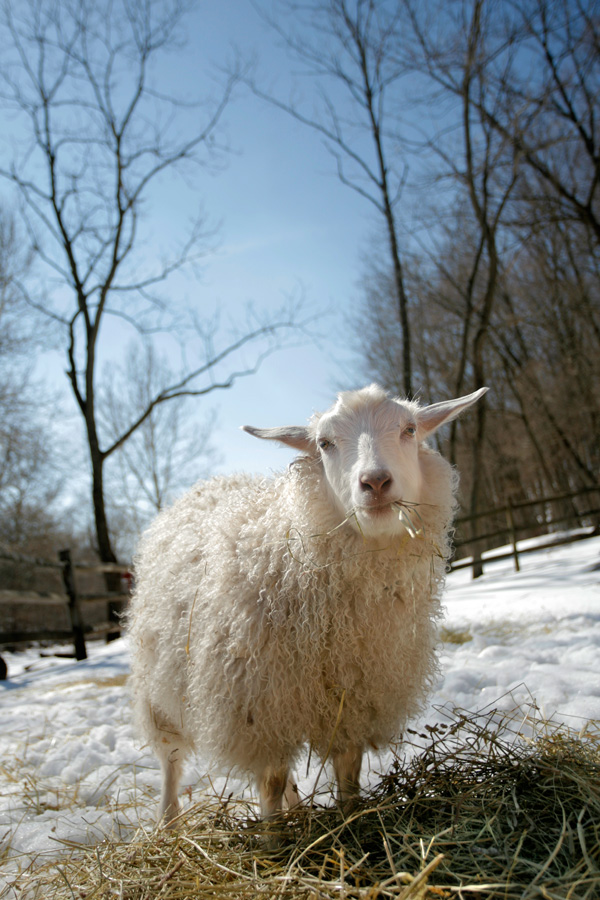I’ll never forget the birthday sweater I bought myself three years ago. It was the most perfect shade of blue and thick, soft cashmere. The only problem was that after I wore it—once—it was covered with pills under the arms and back. Into the return package it went. And you can bet I never bought a sweater from that company again.
I hope this hasn’t happened to you, but I’m guessing it has, if you love cashmere.
Cashmere is the fiber of the cashmere goat, and it’s been a luxury for centuries. For most of that time, it was truly a luxury item. A sweater could cost $200 in the days when $200 went farther than it does today.
But the last fifteen years have seen an influx of dirt-cheap cashmere into world clothes markets. More and more manufacturers are selling cashmere, some of it at very low prices.

isn’t she cute? Link, here.
The good news is, cashmere is more accessible to many of use than it used to be. There’s just more of it around—it’s even showing up in thrift stores.
The bad news is, unless we know what we’re buying, we can be very disappointed in a cashmere purchase.
Here are some cashmere facts that can help us make good buying decisions (see my sources at the bottom of post).
- Today, China has become the world’s largest producer of cashmere—in the past, France and Scotland were top producers.
- Quality varies according to length and width of fibers. Width determines softness, while length determines strength. Long, thin fibers are the best quality and will get softer over time.
To Test Cashmere for Quality….
- Rub the surface with your fingers. Low-quality cashmere will pill almost immediately.
- Crush the fabric in your hand. Fewer wrinkles equal better quality.
- Gently pull the sweater. Good quality springs back to its original shape.
- Look for tags that say pure fibers or wool blends only. Blends with synthetics can mean lower-quality cashmere was used.
Pish Posh Pashmina
“Pashmina” is not a material separate from cashmere. It’s a name used to mislead consumers into thinking they’re getting cashmere. The word “pashmina” comes from the Persian for wool—Pashm. A garment with a fiber label of “pashmina” in the U.S. is breaking federal regulations that require the exact content of cashmere be disclosed.
A better use of the word pashmina is to refer to the scarf-like shawl. Pashminas are super versatile items and I highly recommend having one….but don’t assume it’s made of cashmere.
Care of Cashmere
Knit cashmere is best hand-washed. Hand-washing is actually better for the fibers than dry-cleaning, and will result in a sweater that just gets softer over time.
If you buy cashmere that pills up, try an inexpensive shaver or a sweater comb.
The Bottom Line
A good-quality cashmere item can last a lifetime if you choose well. Before you drop good money on cashmere garment, learn what you’re getting. There’s nothing wrong with choosing a lower-priced, lower-quality garment as long as you know aren’t being misled into thinking it’s something different.
From: Cashmere and Camel Hair Manufacturers’ Institute FAQ’s and U.S. Better Business Bureau article on Federal Trade Commission Regulations on Cashmere Labeling. Albany Times Union, Dec, 25, 2004; “Italy Faces Mounting Threats to Cashmere,” Women’s Wear Daily Dec. 6, 2005.
sallymandy